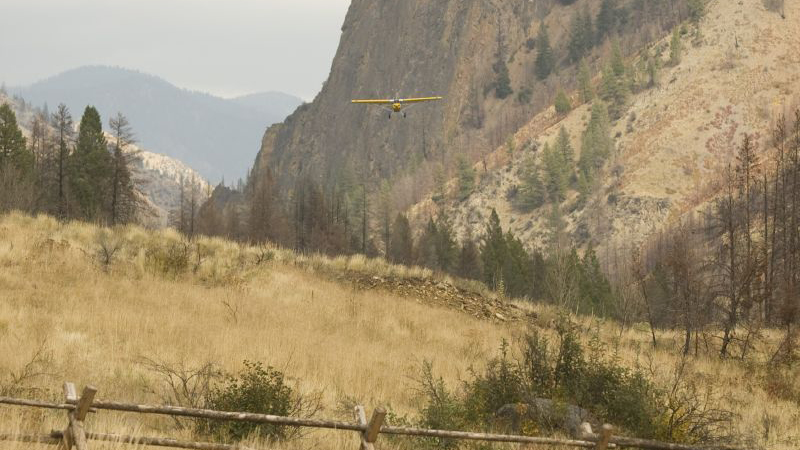
ASI News
Point of no return
An Idaho backcountry story with a lesson
By Alicia Herron
You can always go around…right? Most of the time the answer is yes; however, in the backcountry you occasionally cannot. At some mountainous fields, the terrain rises so steeply that below a certain altitude or past a certain point—the abort point—a pilot must continue the approach to the runway no matter what. Sometimes, these one-way strips require a blind approach. That means when coming in to land the pilot does not always have the runway in sight. No matter what happens past the abort point (too high and fast, or moose on the loose) the pilot must continue the landing even if it bends the airplane—there are no alternatives.
On a summer day in 2018, Todd Simmons was flying with his brother and friends around the Idaho backcountry. As afternoon approached, the experienced group decided to head for the challenging Dewey Moore airstrip—a field Simmons himself had never flown into. Unaware of the nuances of the strip, Simmons attempted to land and then attempted to go-around. The only problem is at the one-way-only Dewey Moore, a go-around is not an option. Listen to the round table interview with Simmons, his flying companions from the day, and AOPA Air Safety Institute's Richard McSpadden for an in depth look at the exacting environment of the Idaho backcountry, and learn how you can be a safer pilot from it.
During your flight training, you probably won’t be flying into one-way airstrips, but it is important to consider times that a go-around might not be the safest option. Maybe one day unforecast weather will appear disturbingly close to your route of flight. Or what about a series of pop-up thunderstorms? Impending low ceilings? Fog rolling in so fast you know the field will be IFR in moments? Keep those moments in mind, even if they are unlikely at this point in your training, and you’ll be safer and more prepared because of it.

Industry News
Skyhawks to Embry-Riddle
University makes commitment with Textron
Embry-Riddle Aeronautical University will buy at least 60 Cessna Skyhawks from Textron Aviation between 2019 and 2022 as the university’s flight training program continues to grow.
The university, with campuses in Daytona Beach, Florida, and Prescott, Arizona, and the aircraft manufacturer signed a memorandum of understanding for the deal at EAA AirVenture in Oshkosh, Wisconsin.
“Having a customer like Embry-Riddle commit to long-term selection of the Skyhawk as their preferred trainer of choice is a continued testament to its status as the most popular single-engine aircraft ever built,” said Ron Draper, president and CEO of Textron Aviation, noting that the company looks forward "to helping train the next generation of pilots.” The agreement includes the option to buy additional units of the Skyhawk, which comes equipped with a Garmin G1000 NXi avionics system with wireless connectivity, and a standard angle-of-attack display system. The purchase agreement was confirmed following an exhaustive evaluation by experts at both campuses, said P. Barry Butler, president of Embry-Riddle.
Embry-Riddle Aeronautical University said it has purchased more than 75 aircraft, mostly Skyhawks, from Textron since 2014. The new aircraft on order will replenish the school’s Skyhawk fleet. More Skyhawks have been delivered to customers around the world than any other type of aircraft, with more than 44,000 put into service.
 NEW FROM ASI
NEW FROM ASI

